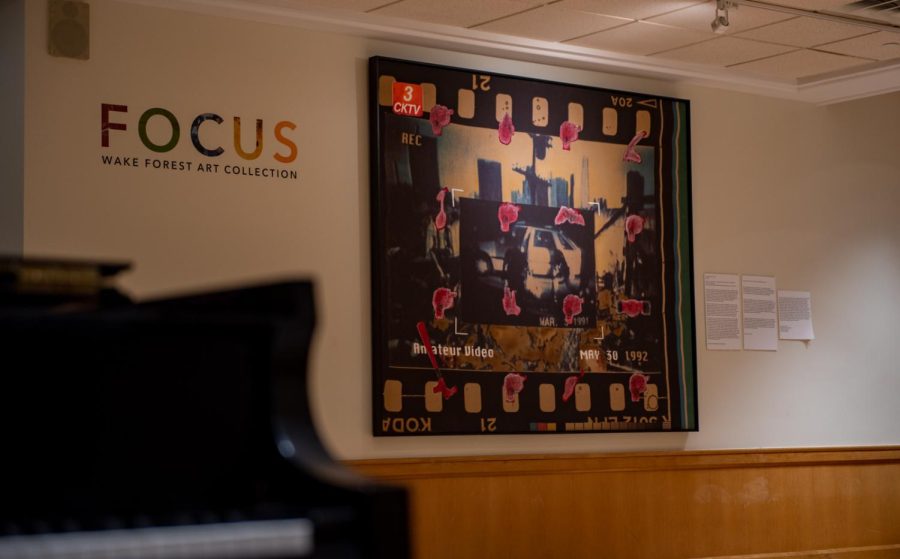For Features, Christa Dutton investigated the Mark H. Reece Collection of Student-Acquired Contemporary Art.
Features
April 27, 2023
This year marks the second year of the Features section, whose focus is the exceptional students, faculty and alumni of Wake Forest University and their achievements. We strive to cover campus-centric topics, highlighting individuals, organizations and trends at Wake Forest. Our hope is that, in doing this, we can help our readers feel more connected to the school and the people who make it special.
This year, the Features section explored not only prominent people, events and places on campus, but also analyzed the overall atmosphere of campus three years after the COVID-19 pandemic through stories such as “Creativity during COVID-19” and our Deacon Profile on Annie Russell, a student who described her experience with long COVID. The section also continued to highlight the diversity and inclusion efforts on campus, sharing the stories of activists such as Derick Mejia Torres, who advocates for undocumented students, and Professor Margaret Bender, who has contributed her time to creating materials for the Cherokee language immersion school New Kituwah Academy Elementary in North Carolina, as well as the work of Cameron Michles, who has sought to make theater more accessible for neurodivergent audiences. We also featured minority students such as CC Carvajal, who shared what it is like to be a blind student at Wake Forest.
Our section also began to feature more in-depth stories, such as the excellent story by Editor-in-Chief Christa Dutton, who investigated Wake Forest’s Mark H. Reece Collection of Student-Acquired Contemporary Art. Her story traced the origins of the art collection, which began in 1963 and continues to send students to New York City every three years to purchase art for the university. Although this program is the only one of its kind in the United States, it does not typically receive much publicity. Christa asked questions about the art’s home and what the university’s responsibility is to preserve the art once it’s brought to campus and shed new light on the artwork that Wake Forest students see daily in university buildings such as Reynolda Hall.
Another example of an investigative feature was James Li’s article on how ChatGPT may threaten academic status quo. There are many more stories to tell on this campus that require in-depth research, interviews and investigation. In the upcoming semesters, there may also be opportunities to develop more series, such as Online Managing Editor Aine Pierre’s articles focusing on graduates of Wake Forest Law school who now serve as justices for the North Carolina Supreme Court. These series also provide our section with opportunities to explore different aspects of related topics in a way that is accessible to readers.
Over the course of this past academic year, the Features section has expanded the way we cover and present stories. We’ve learned to showcase narratives in order to provide the readers of the Old Gold & Black with insight into the environment in which we live and the community that surrounds us. We look forward to continuing the important work this section represents.
